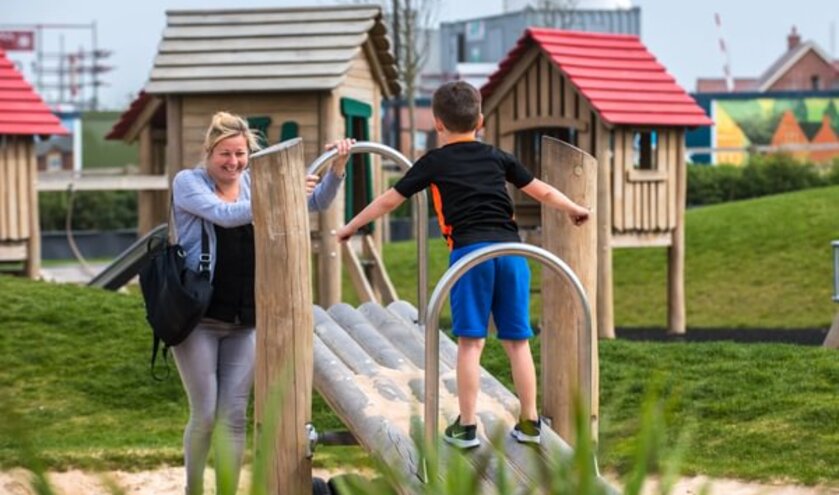Local authorities across the country have for some time been facing the challenge of addressing a structural deficit in housing supply, particularly in the wider southeast, whilst delivering places that do not simply exist, but thrive as healthy and dynamic communities.
Equally, programmes such as Nature Towns and Cities, set up by the National Lottery Heritage Fund, Natural England and the National Trust, seek to remedy historical planning deficits by supporting the vital work of retrofitting and improving access to nature within existing urban footprints.
As momentum for New Towns gathers pace, it's crucial that landscape and the multifaceted benefits it brings to communities blooms alongside so we not only 'build baby build' but 'plant baby plant' as well.
Our Master Developer approach for large scale strategic sites, often described as 'landscape and amenity led', was born out of a recognition that sustainable green, grey, and community infrastructure needs to be integrated, from the outset, into a site's very DNA.
The importance of this commitment was never more apparent, nor more critical, than during the pandemic. The feedback we received during lockdown was strikingly clear: keeping our extensive green spaces open and accessible made a significant difference to residents who could walk or cycle directly from their doorstep, reinforcing the contribution of these environments not just to simple amenity but to mental and physical health.
Operating at scale creates the opportunity to design environments that support physical activity and social cohesion. Simple tangible metrics, such as ensuring almost all homes are within a short, five-minute walk (300 metres) of a publicly accessible green space of at least two hectares, is a ready reckoner baked into our designs. Equally we are proud that our schemes have been recognised for demonstrating all ten of Sport England's Active Design principles.
The landscape that flows through our sites provides the space for growing food, exercise, quiet time and fun. Walking groups, running clubs and allotment societies are just some of the growing ties that bind our new communities via a shared appreciation of their green spaces.
Those same landscapes also provide the space for nature to both flourish and protect. Through deliberate proliferation, we are achieving an above 25% biodiversity net gain average across our portfolio in delivery and are creating on and off site flood alleviation capacity via an extensive network of SUDS. If ever proof was needed of the importance attached to living cheek and jowl with nature, then social media posts and the responses to our Quality of Life surveys provide it in spades.
We cannot however rest on our laurels. With a high proportion of families within our communities such as Houlton in Rugby and Alconbury Weald in Cambridgeshire, we have been looking at how to create activation for and inspire the minds of the next generation. Play, in particular, has historically been treated by many as a tick-box planning condition exercise.
Working with Dr Amy Stringer at Coventry University we wanted to understand how good design could promote active play and fundamental movement skills. Having tested three different playgrounds, with nearly 30 accelerometer wearing kids as well as a multitude of cameras, Amy's findings were recently reported at our Playful Places conference.
For the public and private sector stakeholders in attendance, it was clear that by going the extra mile and working in elements such as uneven terrain, trees, landscaping, throwing and catching options, as well as bigger and more robust play equipment, these spaces can become both social aggregators and levellers.
More work needs to be done on things like hang out spaces for our teens but this was a powerful reminder that we should be planning play infrastructure with the same long-term lens we apply to roads, schools and utilities. This means thinking strategically about location, access, durability and value for communities, not just for today, but for the decades ahead.
There's no single blueprint for the perfect community. We are therefore trialling different approaches across our portfolio and have recently purchased a tree nursery so we can really understand the supply and resilience of this key resource.
What is clear, however, is that research like Amy's prompts a more conscious, evidence-based approach allowing us to go beyond conventional design and create spaces that truly transform how communities live, play and connect. It also means thinking about landscape more holistically. Within new and old communities alike, green infrastructure can and should be unashamedly multifunctional.
Whilst we may obsess about 1.5 million homes, it's the schools, community facilities, green spaces and even playgrounds that truly make a place. It is for this reason we believe that planting community and wellbeing into the DNA of new communities needs to be our collective unshakable imperative.
James Scott is group director of strategy & planning and Johanne Thomas is regional director, communications, communities and partnerships at Urban&Civic


